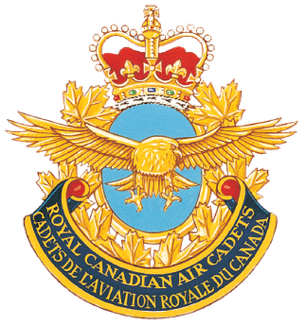National Defence League may refer to:
National Defence League may refer to:
Defense or defence may refer to:

The Returned and Services League of Australia, also known as RSL, RSL Australia and the RSLA, is an independent support organisation for people who have served or are serving in the Australian Defence Force.
Brownie, Browny, or brownies may refer to:

National guard is the name used by a wide variety of current and historical uniformed organizations in different countries. The original National Guard was formed during the French Revolution around a cadre of defectors from the French Guards.
EDL may refer to:
Sikorsky or Sikorski may refer to:
Fullback or Full back may refer to:

Defence or defense in ice hockey is a player position that is primarily responsible for preventing the opposing team from scoring. They are often referred to as defencemen, D, D-men or blueliners. They were once called cover-point.

The Royal Canadian Air Cadets is a Canadian national youth program for young individuals aged 12 to 18. Under the authority of the National Defence Act, the program is administered by the Canadian Forces (CF) and funded through the Department of National Defence (DND). Additional support is provided by the civilian Air Cadet League of Canada (ACLC). Together with the Royal Canadian Sea Cadets and Royal Canadian Army Cadets, it forms the "largest federally funded youth program in the country". Cadets are not members of the military and are not obliged to join the Canadian Armed Forces.
John Morton may refer to:
Dare may refer to:
NDL is a three letter acronym that stands for:

The Estonian Defence League is a voluntary national defence organization of the Republic of Estonia, under management of the Ministry of Defence. Its aim is to guarantee the preservation of the independence and sovereignty of the state, the integrity of its land area and its constitutional order.

The Estonian Defence Forces is the unified military force of the Republic of Estonia. The Estonian Defence Forces consists of the Estonian Land Forces, the Estonian Navy, the Estonian Air Force, and the paramilitary Estonian Defence League. The national defence policy aims to guarantee the preservation of the independence and sovereignty of the state and maintain the integrity of its land area, territorial waters, airspace, and constitutional order. Its main goals remain the development and maintenance of a credible capability to defend the nation's vital interests and of the defence forces in a way that ensures their interoperability with the armed forces of NATO and European Union member states in order to participate in the full range of missions for these military alliances.

The Vice Chief of the Defence Staff is the second most senior member of the Canadian Armed Forces, reporting to the Chief of the Defence Staff (CDS) as well as the Deputy Minister of National Defence. The Directorate General Executive Coordination, the Canadian Forces Provost Marshal, the National Cadet and Junior Canadian Rangers Support Group and several other departments report to the VCDS, who is appointed by the CDS.
National Cyber Security Centre, National Cyber Security Center, or National Cybersecurity Center may refer to:
Gijimani Jim Skosana is a South African politician from Mpumalanga and a current Member of the National Assembly of South Africa for the African National Congress (ANC). He previously served as the mayor of the Dr JS Moroka Local Municipality from 2016 to 2017.
Alice Hlebani Mthembu was a South African politician from KwaZulu-Natal. She was a Member of Parliament for the African National Congress.
Thabo Nelson Mmutle is a South African Member of Parliament for the African National Congress. He first became an MP at the 2019 general election. Mmutle is a former member of the national executive committee (NEC) of the African National Congress Youth League.
The Reliance Foundation Development League(RFDL) is India's Youth Football league organised by the Reliance Foundation in technical support with the AIFF. A total of 60+ teams participates in the tournament. The league was founded to offer opportunities to the young players across the country.